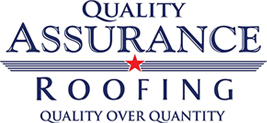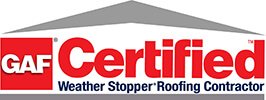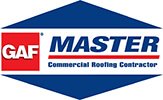Humidity is among the many factors that can contribute to a roof’s deterioration. Understanding its impact on one of the most integral parts of your home is crucial for maintaining its longevity and ensuring your home stays protected from the elements. In this post, renowned local roofing company Quality Assurance Roofing explains how humidity will affect your roof’s durability and lifespan.

How High Humidity Damages Roofs
When humidity levels are high, your roof may be at risk of damage in several ways. One common issue is the growth of mold and mildew. They thrive in damp environments, and high humidity can create the perfect conditions for them to grow. If not addressed promptly, you and your family may become exposed to them, resulting in respiratory issues. Not only that, but mold and mildew can be indicative of potential structural damage caused by moisture damage.
High humidity can also cause your roofing materials to deteriorate more quickly. Shingles, underlayment and flashing are all susceptible to damage from excessive moisture in the air. As these materials break down, your roof becomes less effective at keeping water out of your home, leading to leaks and further damage.
Lastly, high humidity can contribute to increased energy costs. When your home’s insulation becomes damp due to high humidity, it loses effectiveness. This, in turn, causes your air conditioning system to work harder and consume more energy to maintain comfortable indoor temperatures.
How Low Humidity Damages Roofs
On the flip side, low humidity can also wreak havoc on your roof. Shingles in low-humidity environments may become more prone to cracking and curling due to intense heat and lack of moisture. Similarly, the wood materials used for your roof’s structural support, such as trusses and sheathing, can shrink and shrivel due to low humidity. Also, low humidity can cause sealants used on your roof to shrink and become brittle, compromising the overall integrity of your roofing system.
How to Protect Your Roof From Humidity Damage
Now that you understand the potential damage of high and low humidity, let’s discuss some ways to protect your roof from either one.
- Ensure proper ventilation throughout your home, particularly in the attic. Having the right amount of intake and exhaust vents, can help regulate temperature and humidity levels in parts of your home, preventing many of the problems we’ve discussed.
- Regular roof inspections by a professional roofer are also crucial to identifying potential issues early on. A trained eye can spot signs of humidity damage you may not even be aware of, allowing you to address the problem before it worsens.
- Schedule timely roof repair services when issues are detected. Waiting too long to fix a problem can lead to more extensive and expensive damage in the long run, so don’t hesitate to reach out to a professional for help.
Need well-designed and installed ventilation? We can help. Here at Quality Assurance Roofing, you’ll work with top-tier roofers with decades of experience and knowledge in residential roofing systems. Call us at the following numbers: (479) 279-8500 (Rogers, AR) and (417) 799-7889 (Branson West, MO). You can also reach us by filling out this contact form.
















